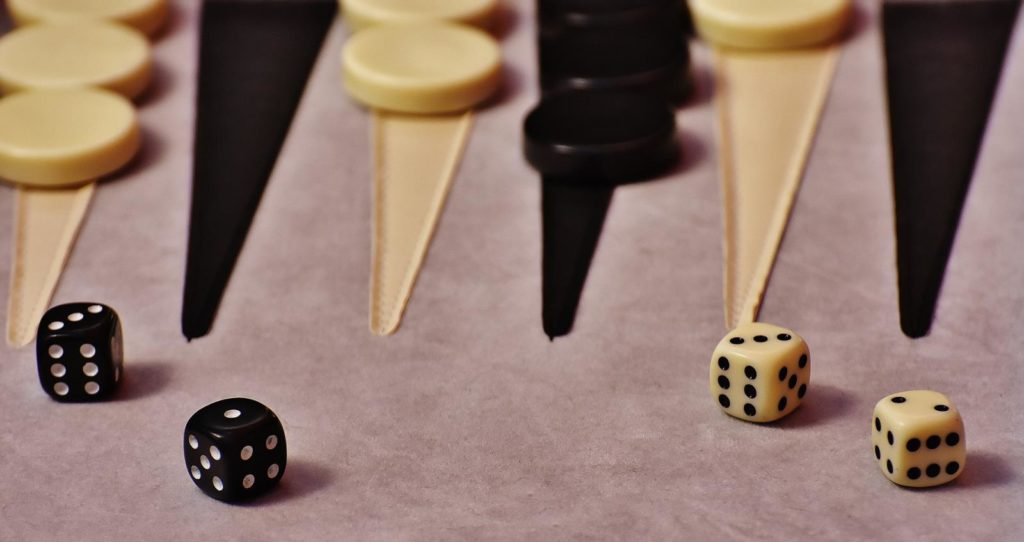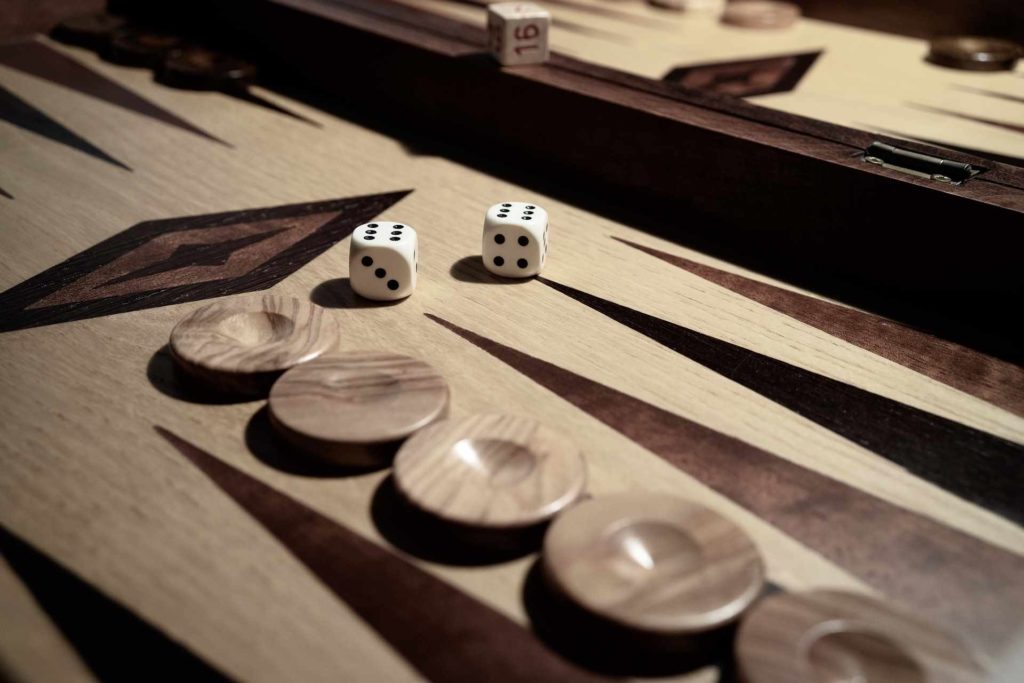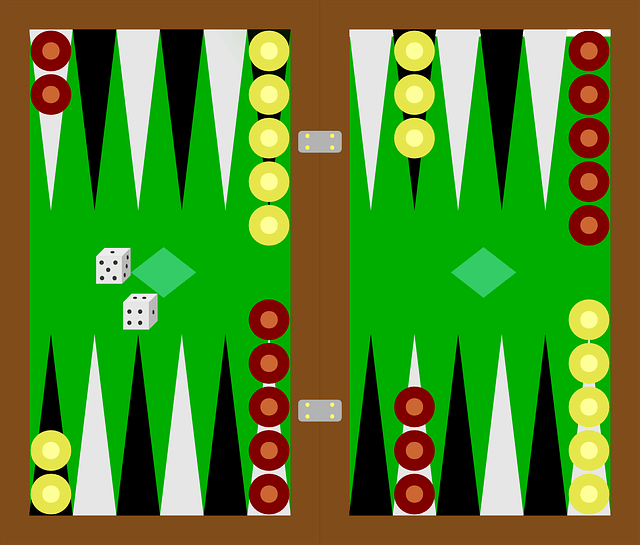Anyone who likes board games has certainly not missed out on backgammon, one of the oldest board games of all. And if you do, then he will now find out everything you need to know.
Backgammon – the structure of the game

The most important thing about backgammon (see also Wikipedia ) is the game board, which consists of 24 triangles. These triangles are called tongues or points and are divided in half on both sides. In the middle of the points there is a so-called bar, which in turn separates the outer board on one side and the home board on the other.
You play with 15 white and 15 black pieces and have to place them on fixed places on the board. It is best to take a look at the picture so that you know how to place your stones and so that you can get your own picture of the backgammon board. It is important, however, that this is not a fixed rule. You can vary both in the colors, as well as the arrangement, where the home field is, or what the direction of the move looks like.
However, a game board is not all that is required for a successful game of backgammon. A six-sided die is also required.
Lost your backgammon guide?
Data & facts
| Age: | From 8 years |
| Playing time: | 20 to 30 minutes |
| Player: | 2 players |
| Category: | Dice game, board game |
| First appearance: | 12th century BC Chr |
| Publishing company: | unknown |
Do you want to win?

If you want to win the game of backgammon, you have to return all your stones to your home field and then “roll them out” with the dice. Your goal is to run out of stones on the backgammon board, then victory is yours! But how do you actually win? This is exactly what we want to bring you a little closer in the following section by telling you more about the beginning of the game and the course of backgammon.
The game begins
We come to the exciting beard of the backgammon game. Each player uses only one die for his first roll of the board game. As in every typical parlor game, in backgammon the player with the highest number of throws starts. You move forward by the number on the dice and, as a nice extra, by the number on the opponent’s roll. After this first roll has been made, two dice are then rolled.
Set stones
Basically in backgammon you always place your stones according to the numbers that can be seen on the dice. It is important, however, that you do not simply add up 4 and 6, for example, and then place 10, but rather serve the dice individually. This means that you can theoretically move different stones, one time 4 and one time 6. However, it is also allowed to place only one stone. The order of the two throws is also irrelevant and can be decided by you.
Backgammon – what to do with the stones
Now you know how many stones you can put and when … but where do you have to go with the good things? As we already know, your goal is to bring the stones back into the home field. This means that you have to move the stones across the opposing field to your own realm. You cannot place a stone on spaces that already have two or more of the opponent’s stones in charge.
Of course, it always depends on your move being permitted and unfortunately this is not always possible depending on the throw. If you can’t pull both digits because you don’t have the options, you have to inevitably leave out one. But which one? The highest throw must always be drawn if you have to decide. If no move is possible, you simply skip this round and do not move your stones at all and do not have to make up for it.
The special litters
What would a backgammon be without the special throws in the form of doubles and co. So there are of course some special regulations with regard to these special situations that we would not like to withhold from you. Here we have that Double , which means that you roll two of the same number (for example 4 and 4). If this is the case, you draw double the number with your stones. In our example that would be four moves each with 4, 4, 4 and again 4.
If you want to move your piece onto a field on which one of the opponent’s pieces is already lying, the rule comes Beat for use. This happens on the one hand when you land on the field where the opponent has his stone, but also when you only make a short “stopover” on the field.
When a stone is hit, it is placed in the middle of the game board, which is exactly what the so-called bar is intended for. Now it’s getting really nasty, because your opponent, whose stone you struck and deposited in the bar, now has to make sure to get this stone back. This means that he may not place any more stones until he has brought all the stones in the bar back onto the field.
If a player wants to get his stone or his stones back in the bar, he rolls the die as normal when making his move. The stones are then placed in the opponent’s home field according to the number of points. With a 3 and 6 he would have to place a stone on the 3rd or 6th field, from the point of view in his own direction of play.
Illegal rolling of the dice in backgammon
If one or both of the dice does not arrive smoothly on the board or floor when you roll the dice, you have to re-roll both dice. This applies, for example, when a stone tilts in everyday language. It is also important what happens if your opponent has made a move that was not allowed for backgammon. You then have the choice of whether you insist that the opponent must make a “legal” move. However, it is up to you whether you insist or renounce this right. It might be a disadvantage for you if you allow your opponent to make another legal and maybe very good move for him, if it doesn’t necessarily have to be.
You must have made up your mind before you roll the dice yourself. Once you have decided to roll the dice, your rights expire and the opponent’s “illegal” move is considered okay and can no longer be contested.
The final roll
Once all 15 of your backgammon stones have arrived in the home field, you can start rolling. You can move your stones out of your home field if they have moved over your last home field with “zero”. If a stone is not played directly with a throw, you have to move it directly into the home field.
If the throw cannot be drawn because there are still stones on the field, then the highest stone is played. In this regard, however, you have to note that it is not possible to split your number. This means that if you have a 5 and a 4, you cannot draw a 3 and a 6, but really have to draw a 5 and a 4.
Download the instructions as a PDF for free

